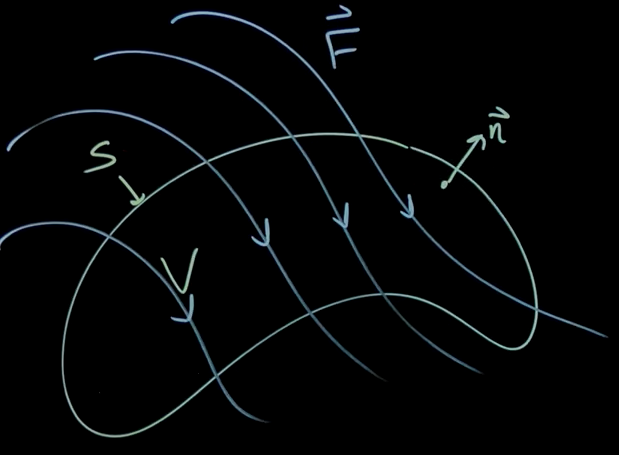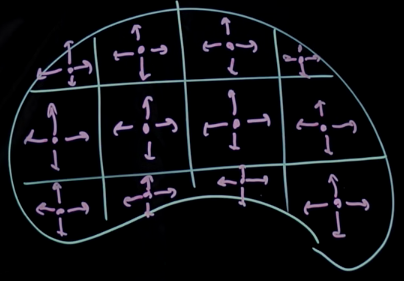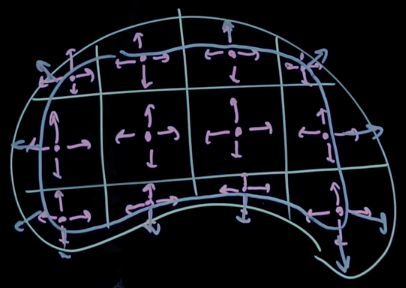Gauss’s Divergence Theorem

Definition: The flux of a vector field through a closed surface is equal to the integral of the divergence over the entire enclosed volume .
Why it’s true
The local divergence in the every point in the field may be represented as follows

- Assuming the vector field is continuous, and the grid is infinitesimally fine, the fluxes in the opposite direction of each neighbour-owner pair, cancel each other out.
- When each sub volume is integrated, the only divergence vectors that remain belong to the cells without neighbours i.e. along the surface.

- Note: The integral of all the divergence vectors along the surface is nothing but the flux through the surface.
I don’t understand this: To calculate the volume of an irregular shape, we can set the divergence as 1 and the surface integral gives us the area.